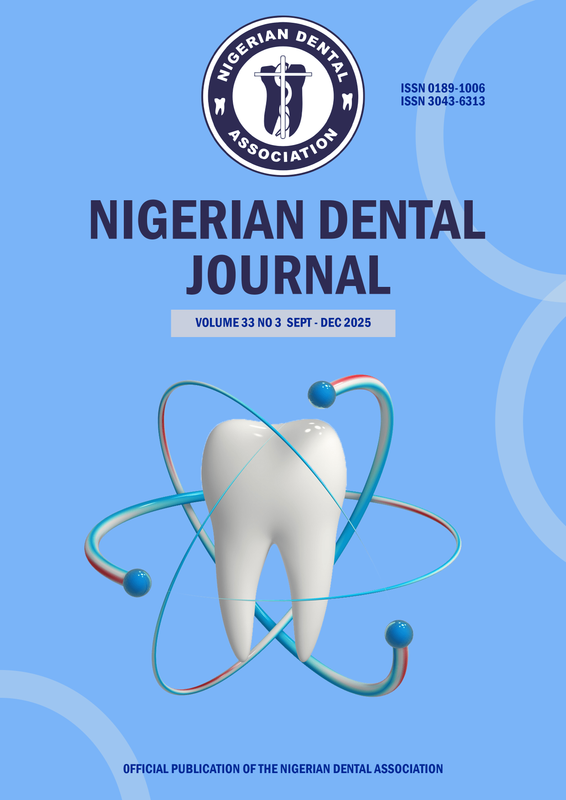Sensory nerve injury following impacted mandibular third molar extraction: the Lagos University Teaching Hospital experience.
DOI:
https://doi.org/10.61172/ndj.v16i1.178Keywords:
Sensory nerve damage, Impacted mandibular third molars, Inferior alveolar nerveAbstract
Objective: To investigate the prevalence and pattern of sensory nerve injuries after surgical removal of impacted mandibular third molars.
Methods: A study of patients who required surgical extraction of impacted mandibular third molars between October 2003 and May 2006 at the Lagos University Teaching Hospital (LUTH) was carried out. Data collected from each patient included age, sex and the indication for extraction. Also collected were the angulation of the tooth and surgical difficulty as measured by the total time of surgery. All extractions were performed under local anaesthesia and the buccal guttering technique was used for all extractions. Postoperatively, any occurrences of sensory nerve injuries and the time it took for the patients to recover from it were recorded.
Result: A total of 340 impacted third molars were removed from 335 patients. There were 156 (46.5%) males and 179 (53.4%) females with a male female ratio of 1:1.2. The age ranged from 17 to 55 years with a mean of 26.63 ± 7.39 years. Fifty extractions (14.7%) of the 340 extractions had postoperative complications, of these 2.6% (9 patients) had sensory nerve defects postoperatively. There were five females (0.3% of total female populations) and four males (0.3% of male population). All cases of sensory nerve defects involved the inferior dental nerve. The incidence of inferior alveolar nerve paraesthesia was highest in the under 25 age group, the relationship to the age of patients was however not statistically significant (p = 0.87). Five (55.5%) of the cases with inferior alveolar nerve damage occurred with teeth in horizontal impactions (p = 0.018). The total time of surgery was also statistically significantly associated with the occurrence of sensory nerve injury (p = 0.001).
Conclusion: Sensory nerve injury was significantly associated with both surgical difficulty and horizontal pattern of impactions.
Downloads
Downloads
Published
Issue
Section
License
Copyright (c) 2008 A. C. Olojede, W. L. Adeyemo, O. M. Gbotolorun, G. T. Arotiba, J. A. Akinwande, A. L. Ladeinde

This work is licensed under a Creative Commons Attribution 4.0 International License.
Open Access Statement
- We became fully Open Access since January 2023.
- Our new and archived materials are available free of charge on open basis and under a Creative Commons license as stated below.
Copyright statement
Copyright © 1999 The authors. This work, Nigerian Dental Journal by Nigerian Dental Association is licensed under Creative Commons Attribution 4.0 International License.

